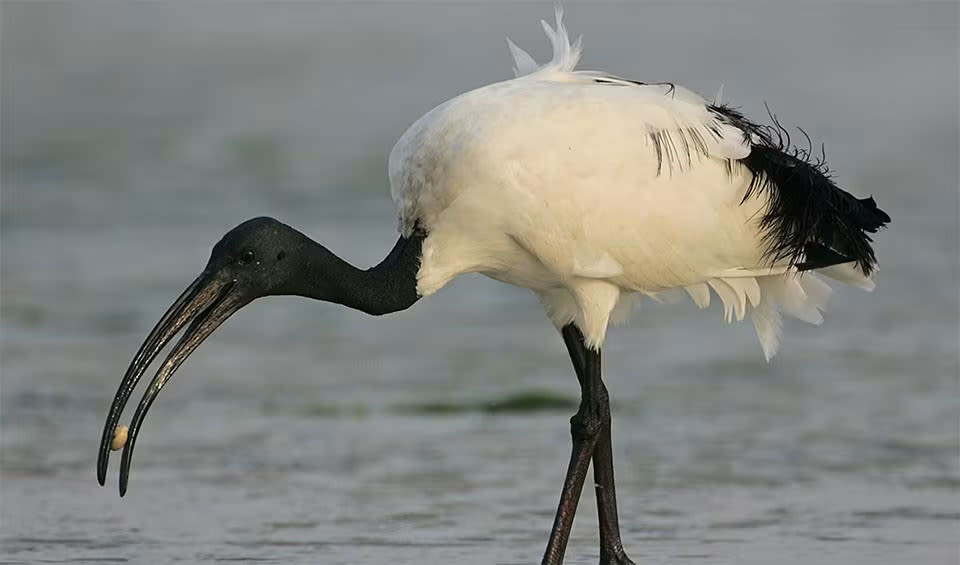Threskiornis – Sacred ibises
The ibises are beautiful birds found in warmer regions near water bodies
Sacred ibises are wading birds that hold significant cultural importance in many parts of the world, particularly in ancient Egypt, where they were venerated and often mummified as a symbol of the god Thoth. These birds are typically found in sub-Saharan Africa, although one species, the Sacred ibis (Threskiornis aethiopicus), was historically found in Egypt and the Middle East.
Sacred ibises inhabit a variety of wetland habitats, including marshy wetlands, swamps, riverbanks, floodplains, and lagoons, as well as grasslands and agricultural fields where they can forage for food. They are often observed roosting in large flocks in trees near water bodies, and they are adept at both swimming and flying. When in flight, they extend their necks and legs fully, creating a characteristic V-formation that aids in energy-efficient travel.
Their plumage is primarily white, which may have contributed to the sacred views of purity and the afterlife in ancient cultures. Exceptions like the Straw-necked ibis (Threskiornis spinicollis) sport a different color scheme, featuring iridescent black feathers on their bodies, contrasting with their straw-like neck feathers.
Sacred ibises have distinctive bald heads and necks with a black skin coloration, which is believed to be an adaptation to their feeding habits that involve probing into mud and water – the lack of feathers reduces soiling and the potential for bacterial growth in warm, humid environments. They have long, down-curved bills that are perfectly adapted for probing into the soil to extract their prey.
These birds are opportunistic feeders and consume a wide variety of prey, including insects, crustaceans, fish, amphibians, and small mammals. During the rainy season, when their food sources are most abundant, Sacred ibises typically breed. They build their nests in trees or bushes, often forming large breeding colonies.
Both males and females are similar in appearance, which is known as monomorphic dimorphism. They share parental duties, with both partners involved in nest construction, incubation, and rearing of the young. Chicks are born altricial (helpless) and require significant parental care before they can fledge.
Species in this genus
African sacred ibis
The fossil records suggest that this species has been on this planet for millions of years


